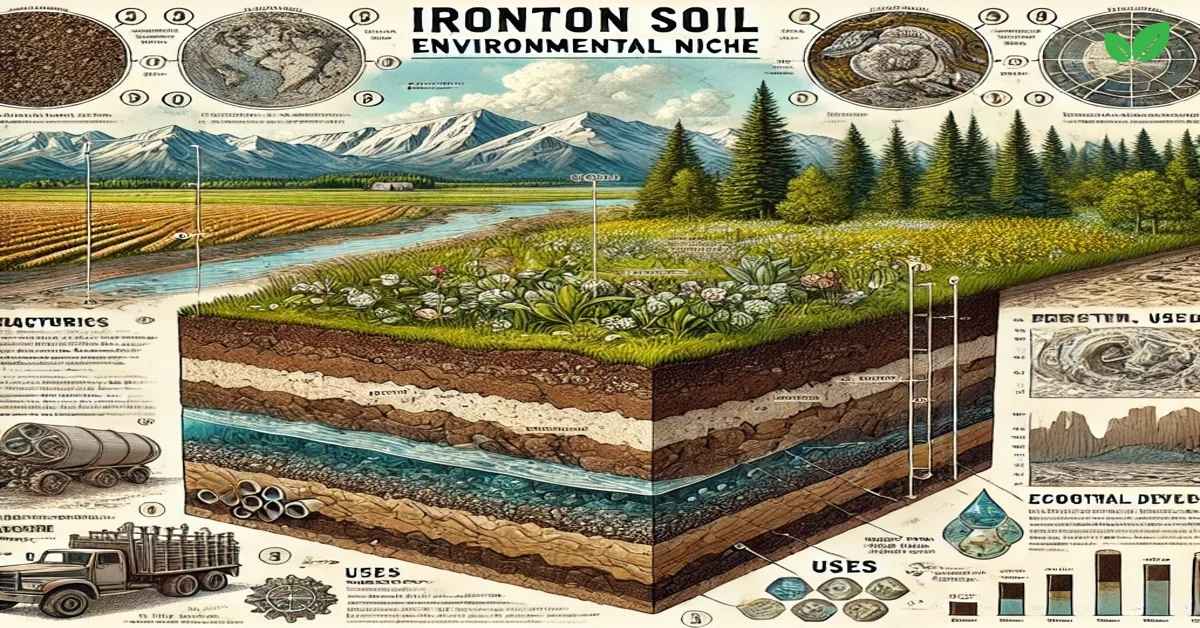Introduction
Soils are the foundation of terrestrial ecosystems, supporting plant growth, regulating water cycles, and sustaining biodiversity. Among the myriad soil types that have been classified globally, Ironton soil stands out for its unique properties and ecological importance. Found predominantly in regions of the United States, Ironton soil contributes to agricultural productivity, forestry, and natural ecosystems. Understanding its formation, characteristics, and uses offers valuable insights into its role in supporting life and maintaining environmental balance.
This article explores the environmental niche of Ironton soil, examining its physical and chemical properties, distribution, ecological roles, human uses, and the challenges it faces. By shedding light on this vital natural resource, we aim to emphasize its significance in sustainable land management and conservation.
1. What is Ironton Soil?
Ironton soil is a well-drained soil type classified within the order Alfisols, known for its fertility and ability to support diverse vegetation. Alfisols are typically found in temperate regions and are characterized by their high base saturation and distinct soil horizons.
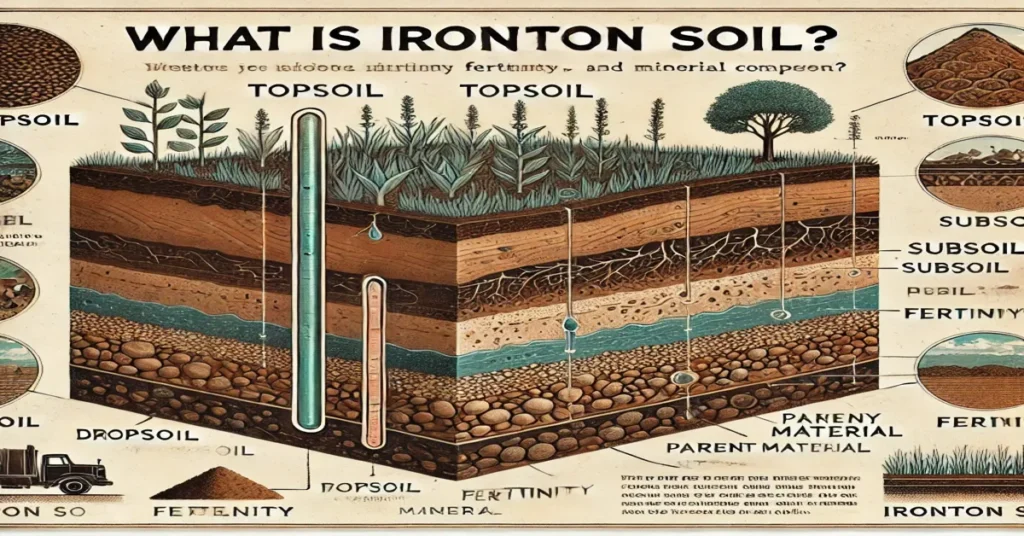
Taxonomic Classification
- Order: Alfisols
- Suborder: Udalfs
- Great Group: Hapludalfs
General Characteristics
- Texture: Ironton soil has a loamy texture, which provides a balance between water retention and drainage.
- Drainage: It is well-drained, making it suitable for various types of land use.
- Color: The soil often exhibits reddish or brownish hues due to its iron oxide content.
- Parent Material: It develops from weathered sandstone, siltstone, and shale, contributing to its mineral richness.
2. Formation and Distribution of Ironton Soil
The unique properties of Ironton soil are a result of its formation processes and the geographical regions in which it is found.
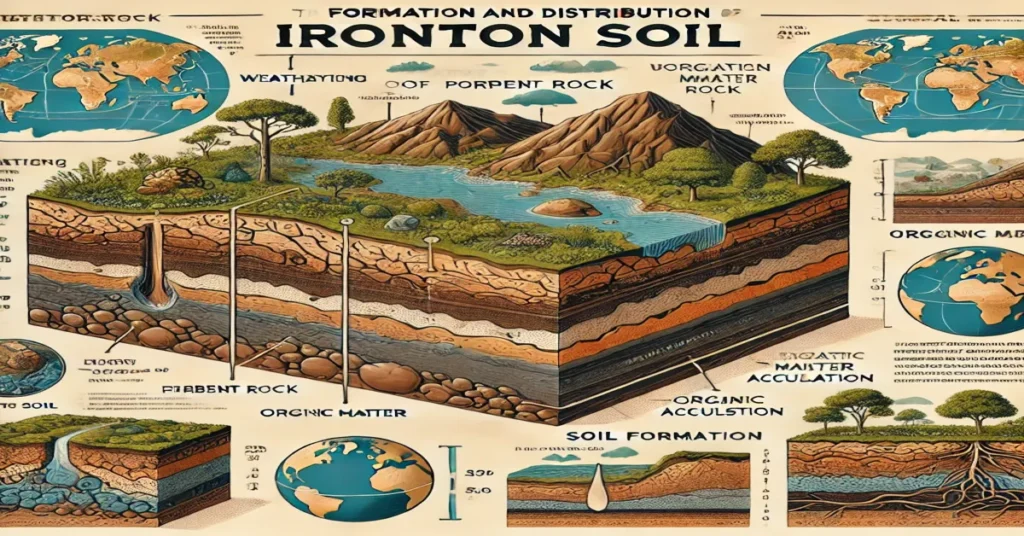
Soil Formation
Ironton soil forms through a combination of weathering processes and organic matter accumulation. Key factors influencing its development include:
- Parent Material: Derived from sedimentary rocks such as sandstone and shale, which provide the soil with essential minerals.
- Climate: Found in temperate regions with moderate rainfall, where weathering and leaching processes shape its structure and composition.
- Topography: Typically located on slopes or uplands, the soil benefits from good drainage and reduced waterlogging.
- Biological Activity: Decayed plant and animal matter enrich the soil with organic content, enhancing its fertility.
Geographical Distribution
Ironton soil is primarily found in the Midwestern and Southeastern United States, including parts of:
- Illinois
- Indiana
- Kentucky
- Missouri
- Tennessee
These regions are known for their agricultural productivity, with Ironton soil playing a crucial role in supporting crops and natural vegetation.
3. Physical and Chemical Properties of Ironton Soil
The properties of Ironton soil make it a versatile and productive soil type.
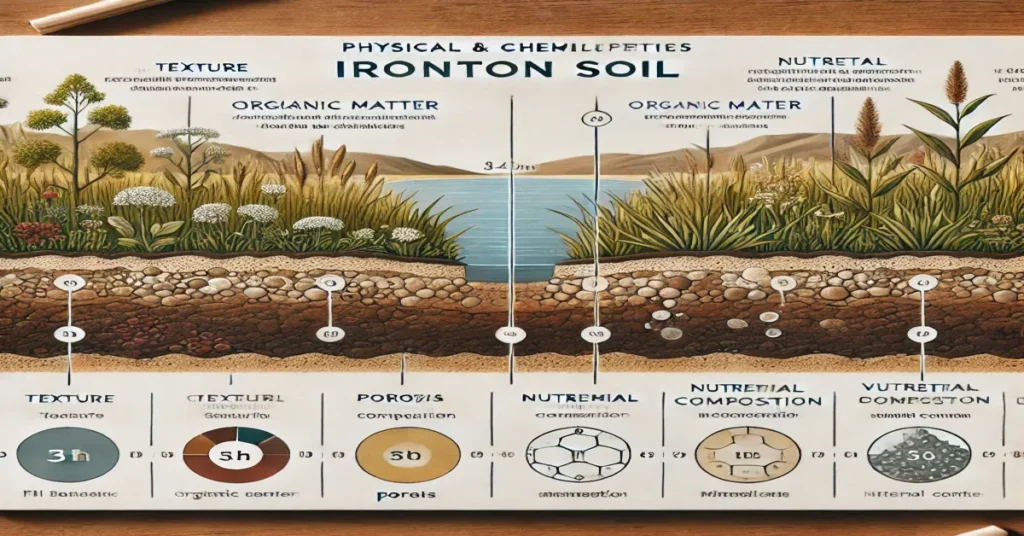
Physical Properties
- Texture: A loamy texture, consisting of sand, silt, and clay in balanced proportions, ensures good aeration and water retention.
- Structure: This soil exhibits a granular or subangular blocky structure, allowing roots to penetrate easily.
- Drainage: Its well-drained nature reduces the risk of waterlogging, making it suitable for agriculture and forestry.
Chemical Properties
- pH Level: Slightly acidic to neutral, with a pH range of 5.5–7.0, which supports a wide range of plant species.
- Nutrient Content: Rich in essential nutrients such as calcium, magnesium, and potassium, derived from the parent material.
- Cation Exchange Capacity (CEC): Moderate to high, enabling the soil to retain and supply nutrients effectively.
4. Ecological Role of Ironton Soil
Ironton soil supports ecosystems and plays a critical role in maintaining environmental health.
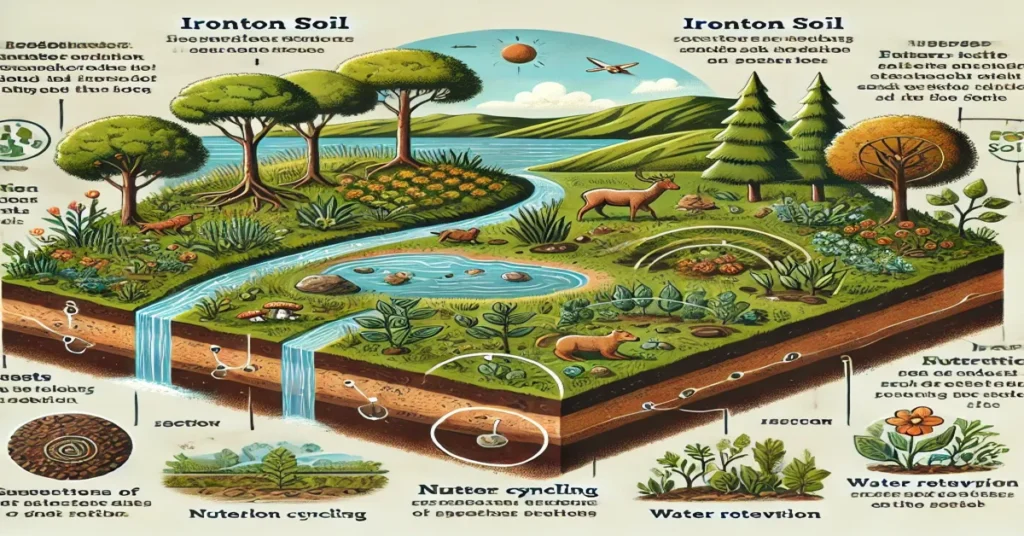
Support for Vegetation
- Forests: It provides a fertile foundation for deciduous and mixed forests, supporting species such as oaks, hickories, and maples.
- Grasslands: In some areas, Ironton soil supports native grasses, contributing to biodiversity and soil stability.
Wildlife Habitat
- The vegetation supported by Ironton soil creates habitats for various wildlife species, including deer, birds, and small mammals.
- Its organic-rich upper layer provides food and shelter for soil organisms such as earthworms, insects, and fungi.
Water Regulation
- Infiltration: The well-drained nature of Ironton soil allows for effective water infiltration, reducing surface runoff and erosion.
- Aquifer Recharge: By facilitating water movement, it contributes to groundwater recharge and the sustainability of local water resources.
Carbon Sequestration
- Organic matter in the soil acts as a carbon sink, helping to mitigate climate change by storing atmospheric carbon dioxide.
5. Human Uses of Ironton Soil
The fertility and versatility of Ironton soil make it highly valuable for various human activities.
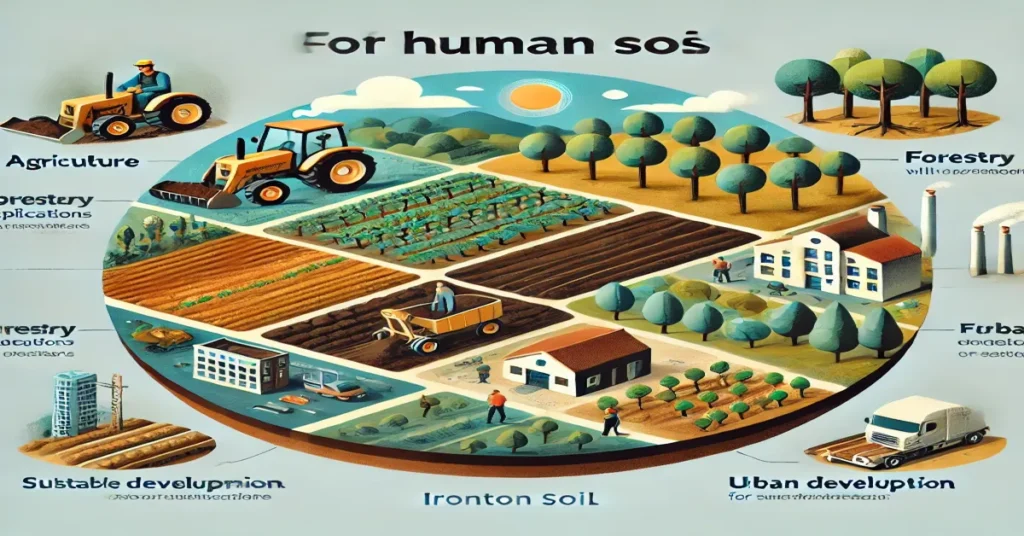
Agriculture
- Crops: Ironton soil is ideal for growing a range of crops, including corn, soybeans, wheat, and tobacco. Its nutrient content and drainage properties support high yields.
- Pastureland: It is commonly used for grazing livestock, providing a stable and productive base for pasture grasses.
Forestry
- The soil supports sustainable forestry practices, allowing for the growth of hardwoods and softwoods that are harvested for timber and other products.
Construction
- Land Development: The stable structure of this soil makes it suitable for construction projects, including residential and commercial developments.
- Road Building: Its compactable nature and drainage properties are advantageous for road and infrastructure projects.
Recreation
- Parks and recreational areas benefit from the soil’s ability to support grass and tree growth, enhancing aesthetic and ecological value.
6. Threats to Ironton Soil
Like many soil types, Ironton soil faces threats that can compromise its health and productivity.
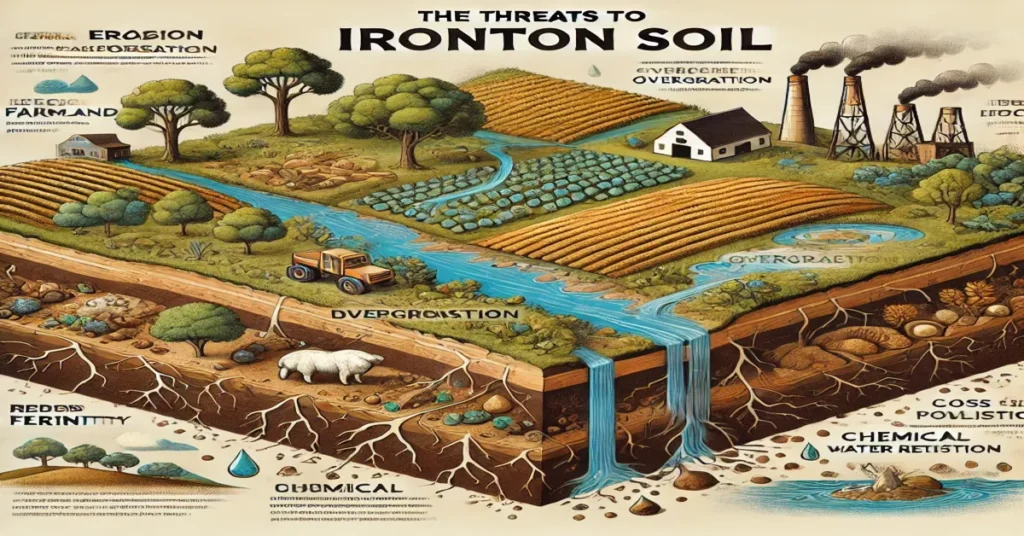
Soil Erosion
- Deforestation: Removal of vegetation exposes the soil to wind and water erosion.
- Agricultural Practices: Intensive tillage and monoculture cropping increase the risk of erosion and nutrient depletion.
Urbanization
- Expanding urban areas reduce the availability of this soil for agricultural and ecological purposes.
- Impervious surfaces, such as roads and buildings, disrupt water infiltration and increase runoff.
Pollution
- Pesticides and Fertilizers: Excessive use in agriculture can lead to chemical buildup and contamination of groundwater.
- Industrial Waste: Improper disposal of waste can degrade soil quality and harm its biological activity.
Climate Change
- Changes in temperature and precipitation patterns may alter the soil’s water retention capacity, nutrient cycling, and overall fertility.
7. Conservation and Sustainable Management
Preserving the quality and productivity of Ironton soil requires a combination of conservation techniques and sustainable practices.
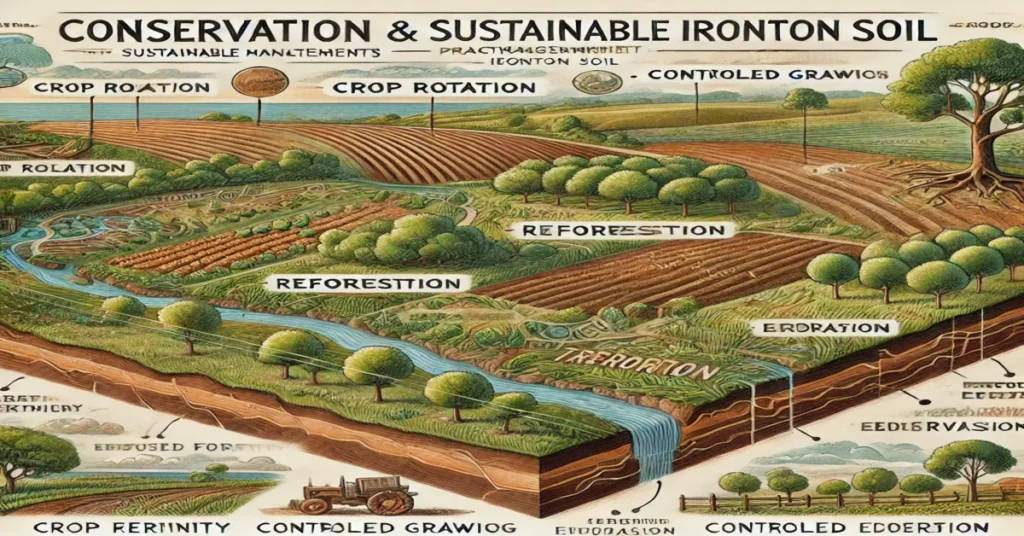
Soil Conservation Techniques
- Contour Farming: Planting along natural land contours reduces erosion on sloped terrains.
- Terracing: Creating stepped terraces minimizes soil loss in hilly areas.
- Cover Crops: Growing cover crops during off-seasons protects the soil from erosion and enhances its organic content.
Sustainable Agriculture
- Crop Rotation: Alternating crops improves soil fertility and reduces pest buildup.
- Reduced Tillage: Minimizing soil disturbance preserves its structure and microbial activity.
- Organic Farming: Using natural fertilizers and compost enhances soil health without introducing harmful chemicals.
Reforestation and Afforestation
- Planting trees in degraded areas restores soil structure, reduces erosion, and enhances carbon sequestration.
Legislation and Policy
- Enforcing regulations to prevent soil pollution and encourage sustainable land use is critical for preserving Ironton soil.
8. The Importance of Studying Ironton Soil
Studying Ironton soil provides valuable insights into soil science, ecology, and sustainable land management.
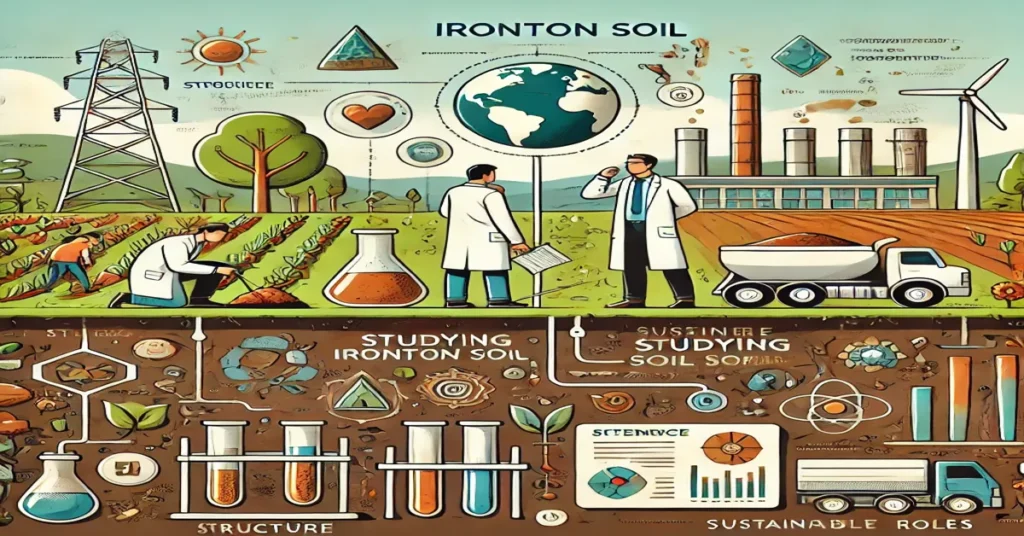
Scientific Research
- Understanding the physical and chemical properties of Ironton soil aids in the development of soil management strategies.
- Research on its role in carbon sequestration contributes to climate change mitigation efforts.
Education and Awareness
- Promoting awareness about the importance of soil health encourages communities to adopt conservation practices.
- Integrating soil science into educational curricula highlights its role in sustaining life.
Conclusion
Ironton soil is a cornerstone of terrestrial ecosystems and human activities, providing a fertile base for agriculture, forestry, and natural habitats. Its well-drained, nutrient-rich properties support diverse vegetation and wildlife, while its role in water regulation and carbon storage underscores its ecological significance.
However, the threats posed by erosion, pollution, urbanization, and climate change necessitate urgent action to protect and sustainably manage this vital resource. By adopting conservation practices and promoting sustainable land use, we can ensure that Ironton soil continues to support life and maintain environmental balance for future generations.
Read More: Sodium Bentonite in Soil: An Environmental Perspective

